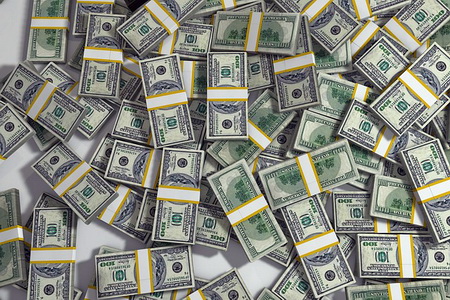Chances are you have seen on TV or in the movies those large printing presses that print US paper currency, but did you know that hundreds of hours of labor is put into the creation and design of each denomination?
Starting with the process to create the paper, onto analyzing, cutting, packaging and then shipping the money to the banks, there are specialists in each department that ensure that the currency that is printed is done as meticulously as possible.
When a new design is forthcoming in one the Bureau of Engraving and Printing facilities (also called the Money Factories), either in Washington, D.C. or Fort Worth, Texas, these experts go into action. They have expertise in the unique field of currency design, who create actual blueprints for the bills. Initially, they produce drafts and when the final draft is approved, script engravers work to put the final design onto a steel template that is identical to the final draft, then steel plates are created from the template.
The sheets consist of a soft steel compound, which is then curved slightly so that they can be fastened onto a printing cylinder. The ink is added and very quickly wiped off, leaving only the ink residing in the recessed areas of the template. Interestingly enough, about three tons of ink is used every day and 800 sheets are printed per hour.
The material that these bills are made of is 75% cotton and 25% linen, but bills over one dollar have red and blue strands woven in to discourage counterfeiting.
The sheets are then reviewed manually and also scanned by a computer for any inconsistencies, but at times, some defects may pass by unnoticed. When this happens and the bill goes into circulation, anyone who comes upon one should keep it, not only as a collector’s item but also as a possible valuable community.
 The bills are automatically cut and separated into stacks of 100. Each stack is wrapped by bands that mark the currency’s denomination. Then ten stacks are shrink-wrapped together to form a bundle. Four of these bundles are shrink wrapped to make a brick, each containing a total of $4,000 and barcoded appropriately. The process is then complete and ready to be shipped to the banks.
The bills are automatically cut and separated into stacks of 100. Each stack is wrapped by bands that mark the currency’s denomination. Then ten stacks are shrink-wrapped together to form a bundle. Four of these bundles are shrink wrapped to make a brick, each containing a total of $4,000 and barcoded appropriately. The process is then complete and ready to be shipped to the banks.
More information on the creation of US money can be found here.
 What Makes Me Different From the Others?
What Makes Me Different From the Others?